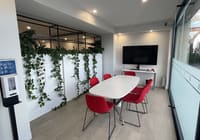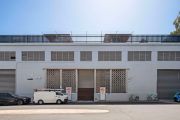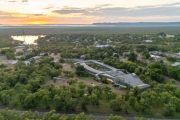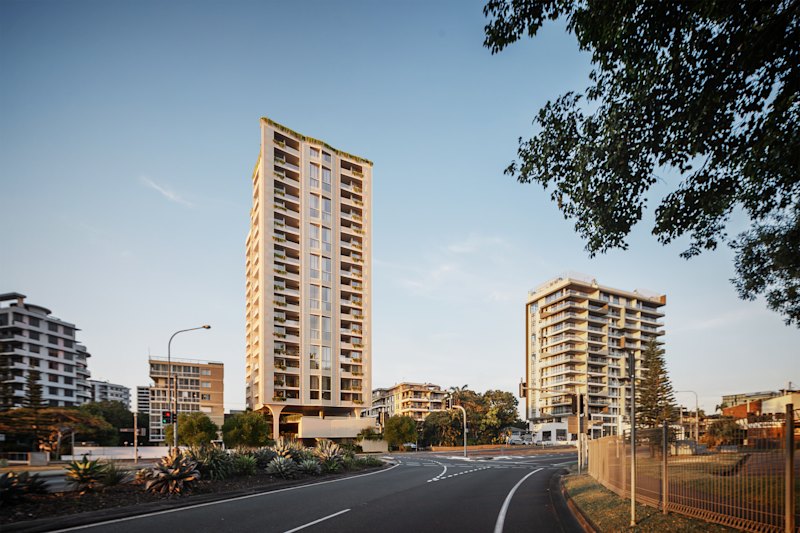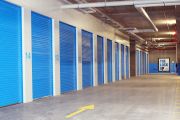
Australian developers and owners of office buildings are leading the ‘greening’ of the property sector
Australian office buildings are world leaders in terms of their sustainability credentials and the rate at which they’re decarbonising, according to one of the country’s top experts in green real estate.
“Change for them has been turbo-charged,” says Davina Rooney, the chief executive of the Green Building Council of Australia.
“While in residential, many owners don’t even know the energy rating of their fridges, let alone their houses, office buildings have been judged for a long time on performance.
“Australia is right up there on the global stage in terms of office sustainability, and that’s something of which we can be very proud.”
Rooney believes the reasons they’re proving to be standouts are threefold.
First, earlier this year, the Australian Public Service announced a goal to be net zero by 2030. With 30 per cent of the office market owned or operated by the government, that’s a significant landmark.
Also, whenever the federal government makes a stand like that, the states and territories tend to follow suit – or try to beat their targets.
In addition, the new reporting requirements for corporates, based on the International Sustainability Standards Board’s recommendations, will come into effect from January 1 next year. An EY report last month revealed that 100 per cent of corporate tenants surveyed had set targets of net zero or greenhouse gas emissions reduction.
“Employees, too, are demanding better buildings,” Rooney says. “They’re telling employees that the commute has to be earned. There has to be a healthier desk waiting for them than the one in their bedroom.”
For many business owners, higher sustainability ratings also make good business sense, as tenants are prepared to pay a premium of up to 5 per cent for a building with strong green credentials.
“With so many tenants now having their own policies around sustainability and green leasing, you have no other choice but to adopt similar targets to reduce emissions and be more energy efficient if you want to secure those top-tier tenants,” says Ray White’s head of research, Vanessa Rader.
“That’s particularly with vacancies for offices so high. We understand there’s a flight to quality but, with many owners setting new goals around ESG [environmental, social and governance] principles for their accommodation needs and investment portfolio, the appeal of assets that meet these objectives will rise in attractiveness, across all asset classes.”
That’s for all three groups, she believes – investors looking where to place their money in super funds and real estate investment trusts (REITs), tenants and employees.
And it’s not just about NABERS ratings, NatHERS and green stars; it’s also about electrification and alternative energy.
“Then there’s water, recycling furniture, and recycling waste,” she adds.
“There’s a lot that people are looking for. Green leases, as businesses strive towards net-zero emissions, will grow in attractiveness, while assets that can achieve these are expected to see premiums and are an area in which investors could see opportunity.”
Green buildings are proving a lure for a vast range of tenants. Starbucks, for example, has signed an eight-year lease, starting mid-year, for an entire 1400-square-metre floor in Melbourne’s T3 Collingwood, Hines’ first mass-timber office building in Asia Pacific.
“The design and sustainability features of T3 Collingwood reflect our values perfectly,” says Chris Garlick, chief executive of Starbucks Australia. “It’s an affirmation of our investment in a sustainable future and in the wellbeing of our partners [employees].”
The EY report, Zeroing In On Net Zero Buildings, found that a net-zero strategy, if done well, can build brands, add value and reduce business risk. It quotes a scheme launched last year to trade solar energy among more than 50 Stockland shopping centres and logistics assets.
The scheme will create an incoming stream from 250,000 square metres of solar panels. The excess will be traded across its portfolio.
In addition, it found that the occupancy rate of green assets was 94 per cent, compared to 91.5 per cent for non-rated assets, while its price was $18,500 per square metre, as against the non-rated $15,900.
The total annual return was also higher for the green assets, at 4.2 per cent, well exceeding that of other assets at 3.7 per cent.
Cushman & Wakefield head of sustainability program management APAC Gehan Palipana says the government’s plan to achieve net zero is compelling. It incorporates elements such as electrification, the 5-star NABERS energy rating directive, electric vehicle charging and the publishing of results.
“Everyone will now need to comply to attract government clients,” Palipana says. “A lot of organisations are now setting decarbonisation targets at a whole-of-portfolio level, and they need to map out how that’s going to happen.
“They’ll be improving their performance on a number of levels. Over the next 10 years, greening is going to become massive in the commercial property sector.”



